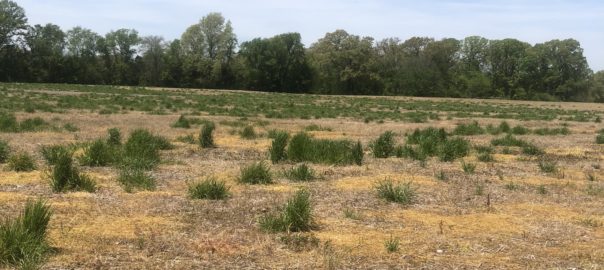
Clearly this year, many are having trouble managing ryegrass and poa. Questions began months ago and continue today and have ranged from tactics to burn them down before planting to how to control them in a standing corn crop. What has become abundantly clear is that glyphosate is no longer an effective burn down option for either species across much of the state.
One reason I feel we are having trouble with ryegrass and poa this spring is because of the higher rates of dicamba used for burndown in Xtend crops. Those higher dicamba rates tankmixed with glyphosate are likely decreasing the effectiveness of glyphosate on these two grass species. Glyphosate-resistance is also at least part of the issue as well for both grass species.
Adding clethodim in with the glyphosate and dicamba tankmix has been the most effective way to control them. The rate needs to be at a minimum 12 ozs/A of Select Max . The plant back to corn after that rate of Select Max is 30 days. Therefore fields that are to be planted to corn may want to go with sequential applications of Gramoxone instead. The two shots of Gramoxone provide best results when they are sprayed 7 to 10 days apart. Fortunately, in the case of poa, Gramoxone is still a very effective option with just one application.
The question on how to control poa or ryegrass in a standing corn crop really has no “sure fire” answer. If the corn hybrid is Liberty Link then Liberty at a quart rate can be effective. Tankmixing in a quart of atrazine with the Liberty can improve the control. Please keep in mind when utilizing Liberty in corn applications in May is that air temperatures can be too cool for Liberty to be effective. In order to get the best ryegrass control with Liberty, try to pick a warm spell where temperatures are in the mid-80s and apply it during the middle of the day. The other option is Steadfast Q which can be effective on ryegrass even at cooler temperatures. The catch is that some ryegrass in the state is ALS-resistant so Steadfast Q will not be effective in those cases. Steadfast Q will not be an effective option for poa at this time.


